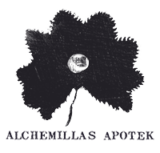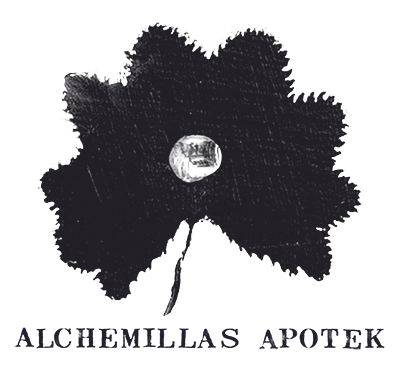Description
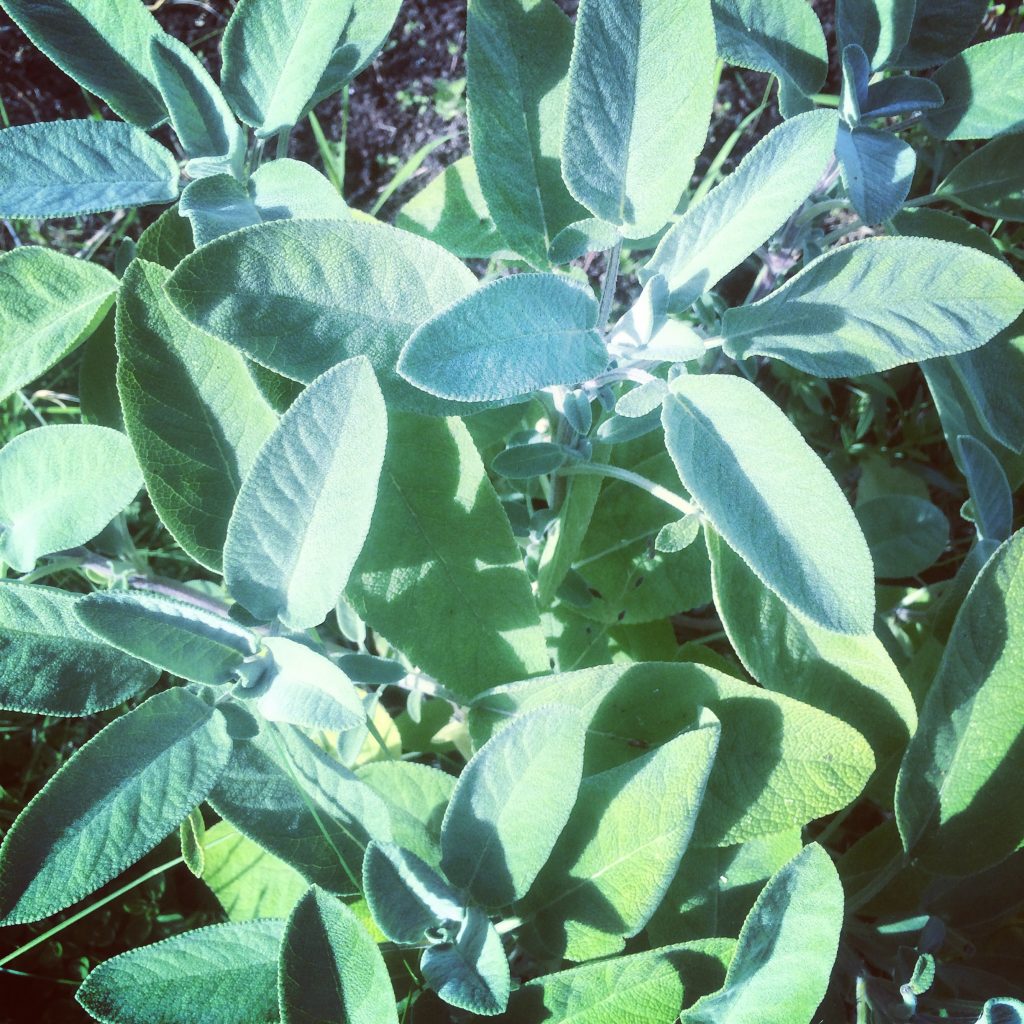
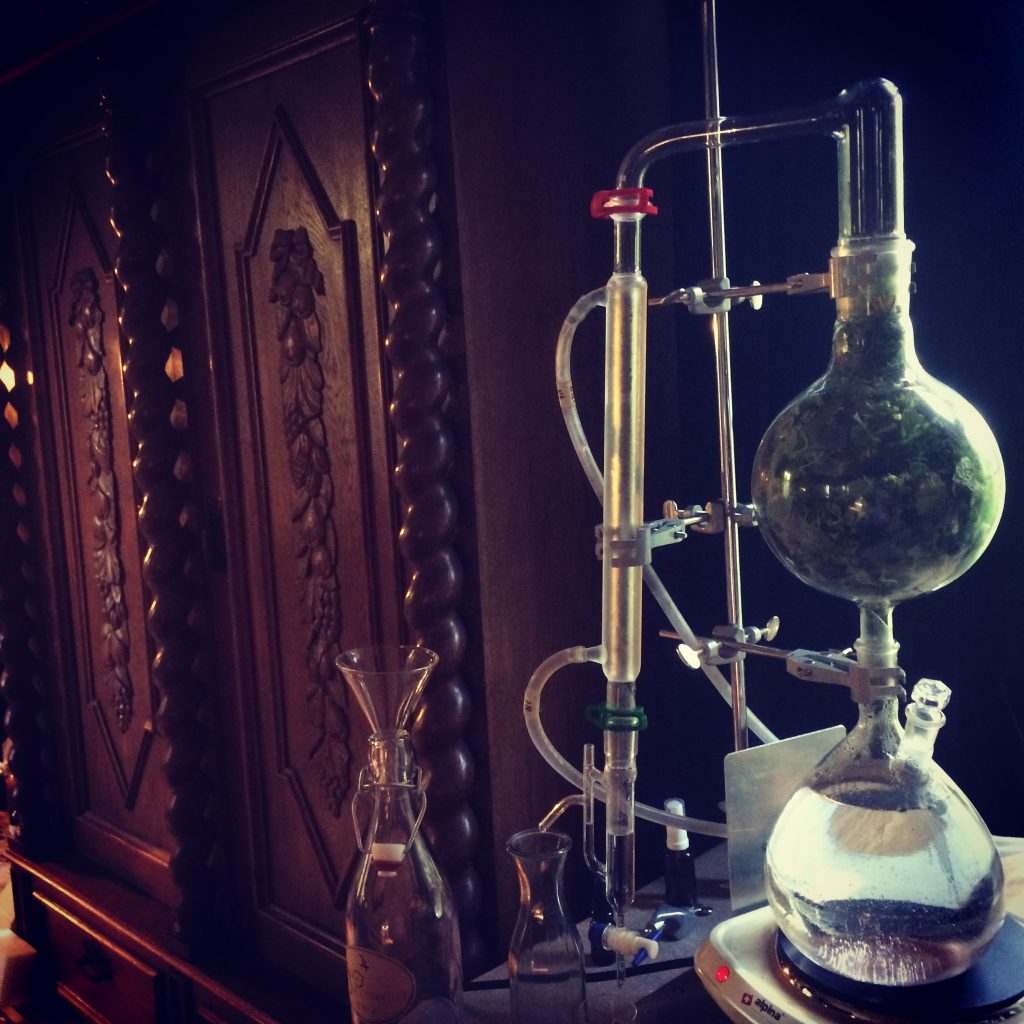
70 kr


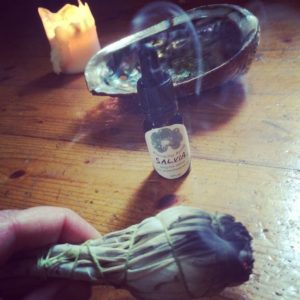
[:en]Sage is for the practicing mystic – I walk my talk
![]()
Sage is used for irritations and inflammations of the throat and respiratory system. Sage has an action on the liver, gallbladder and the digestive system and helps the liver to break down fat. Regulates sweating.
![]()
Purification of the self and purity in communication. Support in delivering our messages. Sage reconnects us to who we are and helps us to recognise wisdom in everything. How each reflection of life is a reflection of our own nature, as we hold the whole universe within our own being.
![]()
Sage helps with integration of the spiritual and the physical worlds together, dissolving the boundary between the mundane and the sacred, helping to bring knowledge into the heart where it can transform into wisdom. Sage is a wise plant teacher of many secrets.
[:sv]Salvia är för den praktiserande mystikern – I walk my talk
![]()
Salvia används vid inflammation och irritation i halsen och luftvägarna. Salvia verkar på levern, gallan och matsmältningen genom att hjälpa levern att bryta ner fett. Salvia hjälper till att reglera svettning.
![]()
Salvia främjar klarhet i kommunikationen. Den stödjer oss att leverera vårat budskap. Salvia hjälper oss att knyta an med vårt sanna jag och att upptäcka visdomen som finns i allt runt om kring oss och uppenbarar att alla reflektioner av livet är reflektioner av oss själva, ty vårat väsen innehåller hela universum.
![]()
Salvia stödjer oss att integrera den andliga och den fysiska verkligheten så den blir till en värld. Den upplöser gränsen mellan det vardagliga och det heliga och stödjer oss att förankra kunskapen i hjärtat där den kan transformeras till visdom. Salvia kan bli en inre lärare.[:]
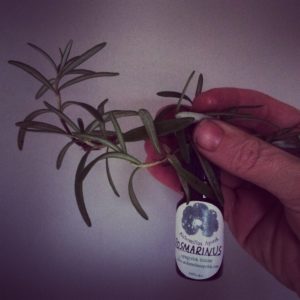
[:en]“There’s rosemary, that’s for remembrance.” – Shakespeare
![]()
Warming circulatory stimulant, most notably for the head and the brain including circulation to the eyes, therefore good in case of glaucoma. Brings blood to the heart, liver and gallbladder hence also good for digestion. Nervine, helpful in Alzheimers, nootropic, enhancing cognitive function, short and long-term memory. Good for type II diabetes.
![]()
Good for persons lacking confidence to give clarity around who we are, why we are here and what we do with our time here. Rudolph Steiner taught that Rosemary increase the sense of selfhood, which he related to the solar properties or the warmth of the body, to support selfconciousness, especially to be used in the morning to stimulate awareness.
![]()
Rosemary helps us in remembering who we are, to be strong in who we are, to embrace our pasts and presents without regrets. Through remembering via the heart more than through the mind we can reconnect and find support from in our ancestry.[:sv]“Här är Rosmarin, den hjälper oss att minnas.” – Shakespeare
![]()
Värmande och stimulerar cirkulationen, särskillt till huvudet, hjärnan inklusive ögonen, därför bra vid glaucom. Cirkulerar blodet till hjärtat, levern och gallblåsan, därför bra för matsmältningen. Bra för nerverna, vid Alzheimers, nootropisk dvs stödjer kognitiv funktion, korttids och långtidsminnet. Stödjande vid diabetes II.
![]()
Bra för personer som saknar självförtroende och skänker klarhet kring vem vi är, varför vi är här och hur vi ska använda tiden vi har. Rudolph Steiner sa att Rosmarin stärker jagkänslan, som han relaterade till den solära energin som värmer upp kroppen. Rosmarin stärker självmedvetenhet, särskillt när den används på morgonen för att väcka medvetandet.
![]()
Rosmarin hjälper oss att minnas vilka vi är, att vara starka i oss själva, att omfamna det förflutna och nuet utan ånger. Genom att minnas via hjärtat snarare än med hjärnan kalibreras kanalen mellan sinnet och hjärtat och klarhet skapas för att omstrukturera och uttrycka hjärtats språk och att återknyta kontakten till våra rötter.[:]
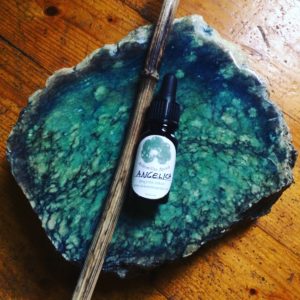
[:en]As above – So below
![]()
Angelica is bitter, warming and aromatic.
It can be useful in treatment of swellings, inflammations and glandular indurations, particularly of the head and neck region. Good for circulation, for cold hands and feet. Used for fever.
It is good for anguish, spasms, nervous excitation and fatigue; calms excess in both the sympathetic and parasympathetic branches of the autonomic nervous system. It is good for PMS and excessive bleeding while menstruating.
Can be used for for arthritis and gout. Good for the liver, increases digestion and metabolism of oil and production of bile, hence increases digestion and nutrition. It relaxes the throat and makes it easier to take long deep breaths. It simultaneously opens the imagination and the mind when prana (life force through breath) can flow.
![]()
Angelica is an important Shamanic plant among the Saami people of the North.
In Native American herbalism it is referred to as a “Bear Medicine”. Just as the bear goes into hibernation through the winter, bear medicine usually relax the mind, open the imagination and bring people into dreamtime. Angelica certainly has this capacity.
Bears eats these roots upon awakening in spring to wake up, clear their throat and start rebuilding their mass.
![]()
I see Angelica as an embodiment of the Alchemical device “As above so below”.
The deep aromatic root and the umbrella-like flower full of starlike seeds are connected through a hollow stem, a channel connecting the heaven and the earth. This is one of the effects the Spagyric Tincture may have upon you – making you feel like this channel.
Angelica connects you with your guardian angel, or if you prefer to call it your higher self.[:sv]Så som ovan – så och nedan
![]()
Kvanne är bitter, värmande och aromatisk.
Kan användas vid svullnader, inflammationer, särskilt i nack- och huvudregionen samt svullnade lymfkörtlar. Bra för cirkulationen, kalla händer och fötter.
Kan användas vid feber, ångesttillstånd, när man är nervöst uppjagad eller vid utmattning. Kvanne lugnar både det sympatiska och parasympatiska nervsystemet. Bra vid PMS och vid kraftig menstruationsblödning.
Kan användas vid artros och gikt. Bra för levern, matsmältningen och gallproduktionen.
Avslappnande för halsen och underlättar djupandning. När prana kan flöda (livskraft via andetaget) främjas fantasin och sinnet öppnas.
![]()
Kvanne är en viktig helande ört för shamanerna i norr, bla samerna. Hos de nordamerikanska indianerna hör kvanne till Björn-medicinerna.
På samma vis som björnen går i ide , har björn-medicinen en avslappnande verkan på sinnet, fantasin väcks och kontakten med drömtiden stärks.
Björnar äter kvannerötter när de vaknar på våren för att ta djupa andetag och för att stärka sig.
![]()
Jag upplever Kvanne som förkroppsligandet av den alkemiska devisen: Så som ovan- så och nedan. Den armotaiska roten och den paraply-formade
blomman full av stjärnlika frön förbinds av en ihålig stjälk, en kanal mellan himmel och jord. Angelica stärker förbindelsen med vår skyddsängel, eller
högre jag.[:]
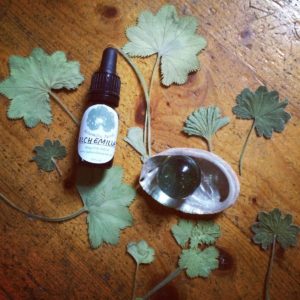
[:en]The Alchemist distills the Gold of a Thousand Mornings.
![]()
Lady´s Mantle has a time honored traditional use as a woman's healing herb. Lady´s Mantle has astringent and styptic properties, on account of the tannins it contains. It is a very healing herb for the womb and can be helpful for painful menstruations. It is a fertility herb, also good to use during and after pregnancy.
As a heart-tonic Alchemilla can be combined with prescribed medications. Strengthens the arteries. Good for swollen feet and legs.
![]()
The botanical name, Alchemilla, or “little alchemist” speaks of the uses of Lady’s Mantle which have the ability to transform. Matthew Woods writes an account of this in The Book of Herbal Wisdom.
The alchemists found interest in the fact that the morning dew gathers like a translucent pearl in the center of the fan-like leaves, well into almost mid-day, when other plants are all dried off.
“Something within it is distilling the essence and simultaneously helping to preserve it. In a material sense Alchemila must correspond to processes which encourage cohesion on the surface of the droplet and prevent vaporization, while at the same time (and plants seem to work in two opposite directions) it must possess the ability to refine and distill fluids into their most subtle expression or essence.”
![]()
In the same way in which the subtle, invisible membrane preserving the cohesion and integrity if the droplet is maintained, we can imagine Alchemilla making a subtle, invisible membrane around a person. It is encouraging integrity and cohesion. It works uplifting and empowering. It is about a kind of inner circulation and distillation.
It is healing to the emotional waters of the body and supports healing from sexual trauma.
[:sv]Alkemisten destillerar tusen morgnars guld.
![]()
Daggkåpa är en kvinnoört med sammandragande egenskaper. Den är läkande för livmodern och bra att ta till vid smärtsam menstruation. Den har använts traditionellt som en fertilitetsört och är stärkande under och efter en graviditet. Den stärker även hjärtat och artärer och går att kombinera med receptbelagda mediciner. Daggkåpa är bra vid svullna fötter och ben.
![]()
Etymologiskt avslöjar Alchemilla “den lilla alkemisten” att hon har transformativa förmågor. Matthew Wood skriver i sin bok “The Book of Herbal Wisdom” att alkemisterna fascinerades av att daggdroppar samlas i mitten av de solfjäderlika bladen och bevaras där långt efter att daggen torkat på andra växter på eftermiddagen. Någonting hos daggkåpan både destillerar och bevarar daggens essens. Alchemilla uppmuntrar en kohesion, en sammanbindning mellan molekyler och atomer i ett material, i detta fall daggen, och fördröjer evaporeringen, samtidigt som hon verkar ha förmågan att förfina och destillera vätskor till sitt mest subtila uttryck och essens. Växter arbetar ofta på detta sätt – i två polariteter av ett spektrum.
![]()
På samma vis som det subtila osynliga membranet bevarar kohesionen och integriteten av daggdroppen, kan man se Alchemilla skapa en subtil, osynlig bubbla runt en person på ett energiplan. Integriteten stärks och man känner sig sammanhållen. Daggkåpan verkar upplyftande och skänker inre styrka. Det handlar om en slags inre destillering och cirkulation. Den helar vårt inre vatten och de känslor som strömmar inom oss. Daggkåpa kan vara bra att ta till om man har råkat ut för emotionella eller sexuella övergrepp.[:]
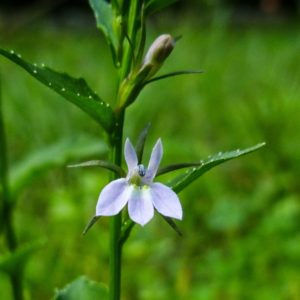
[:en]
It is hard to understand addiction unless you have experienced it yourself. – Ken Hensley
![]()
Lobelia is also called “Indian tobacco” and has a long history of use as an herbal remedy for respiratory conditions such as asthma, bronchitis, pneumonia, and cough. Historically, Native Americans smoked lobelia as a treatment for asthma. In the 19th century, American physicians prescribed lobelia to induce vomiting in order remove toxins from the body. Because of this, it earned the name “puke weed.” It is a purgatory, it means that it makes you vomit if taken in larger doses.
![]()
Lobelia impacts neurotransmitter activity in a way that is similar to nicotine. The active ingredient, Lobeline, is a both a nicotine agonist and antagonist derived from an Indian plant “lobelia inflata.” Here's what that means:
The brain has neurotransmitter receptor cells that have been labeled 'nicotinic' receptors because they are stimulated by nicotine. Lobeline acts on these cells as an 'agonist,' which means that it binds to these cells and stimulates them in a similar way to nicotine. (The effects are not as strong as nicotine, however.) Because the drug is in effect 'parked' at the receptor sites on these cells, it also partially blocks nicotine from activating them, thereby reducing the effect of nicotine in the brain from smoking, and helping to reduce the 'reward' associated with smoking.
Interestingly, unlike nicotine, which is highly addictive, lobeline does not appear to be addictive. This may be because of its structural differences from nicotine, and the different ways that it affects dopamine storage and release. (Dopamine is another a neurotransmitter – one that is implicated in addictive patterns of behavior.)
Rather than stimulating the release of dopamine in the normal way (from the presynaptic terminal), lobeline appears to induce the metabolism of dopamine intraneuronally as well as inhibit dopamine re-uptake. The result of this is that rather than getting a 'dose' of rewarding dopamine immediately connected to the behavior of smoking (or of taking lobeline), the dopamine effect is more diffuse. So you still get the pleasant dopamine effect, but because it is not strongly associated with the behavior, it does not induce addictive behaviors, and in fact partially blocks the addictive effect of nicotine intake.
Dwoskin LP, Crooks PA., (2002) A novel mechanism of action and potential use for lobeline as a treatment for psychostimulant abuse. Biochemical Pharmacology. Jan 15;63(2):89-98.
![]()
I made a formula to help people stop smoking or using snuff which is common in Sweden. So far this formula have helped around 12 people in quitting, myself included!
I recomend smokers or snuffers who wish to quit my formula rather than the pure Lobelia spagyric tincture because it has calming and adaptogenic herbs in it that helps the quitter cope with stress.
[:sv]
Det är svårt att förstå beroende om du aldrig har upplevt det själv. – Ken Hensley
![]()
Lobelia kallas även “Indiantobak” och har används länge i historien vid andningsbesvär, asthma, bronkit, lunginflammation och hosta. Den amerikanska ursprungsbefolkningen rökte lobelia för att lindra asthma. På 1800-talet började man ordinera lobelia som kräkmedel för att driva ut gifter ur kroppen. Det gjorde att man började kalla lobelia för “pukeweed”. I högre dos framkallar lobelia kräkning och det ska man veta om man är intresserad av att använda denna ört.
![]()
Lobelia impacts neurotransmitter activity in a way that is similar to nicotine. The active ingredient, Lobeline, is a both a nicotine agonist and antagonist derived from an Indian plant “lobelia inflata.” Here’s what that means:
The brain has neurotransmitter receptor cells that have been labeled ‘nicotinic’ receptors because they are stimulated by nicotine. Lobeline acts on these cells as an ‘agonist,’ which means that it binds to these cells and stimulates them in a similar way to nicotine. (The effects are not as strong as nicotine, however.) Because the drug is in effect ‘parked’ at the receptor sites on these cells, it also partially blocks nicotine from activating them, thereby reducing the effect of nicotine in the brain from smoking, and helping to reduce the ‘reward’ associated with smoking.
Interestingly, unlike nicotine, which is highly addictive, lobeline does not appear to be addictive. This may be because of its structural differences from nicotine, and the different ways that it affects dopamine storage and release. (Dopamine is another a neurotransmitter – one that is implicated in addictive patterns of behavior.)
Rather than stimulating the release of dopamine in the normal way (from the presynaptic terminal), lobeline appears to induce the metabolism of dopamine intraneuronally as well as inhibit dopamine re-uptake. The result of this is that rather than getting a ‘dose’ of rewarding dopamine immediately connected to the behavior of smoking (or of taking lobeline), the dopamine effect is more diffuse. So you still get the pleasant dopamine effect, but because it is not strongly associated with the behavior, it does not induce addictive behaviors, and in fact partially blocks the addictive effect of nicotine intake.
Dwoskin LP, Crooks PA., (2002) A novel mechanism of action and potential use for lobeline as a treatment for psychostimulant abuse. Biochemical Pharmacology. Jan 15;63(2):89-98.
![]()
Jag har gjort ett spagyriskt elixir (så kallar jag mina blandningar som innehåller flera spagyriska tinkturer) som stöttar de som vill sluta röka eller snusa. Hittills har denna blandning hjälpt ett dussin att sluta, mig själv inkluderad!
Jag rekomenderar rökare och snusare som vill sluta vara det detta elixir framför den rena spagyriska lobeliatinkturen för mitt sluta röka support elixir innehåller även lugnande och adaptogena örter som hjälper den som slutar att hantera stress.
jag vill dela med mig av 2 tips till den som vill sluta att röka att använda i kombination med elixiret:
[:]
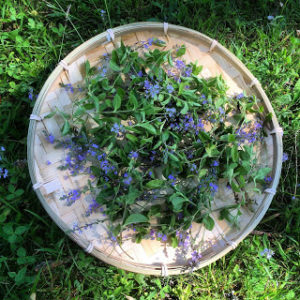
[:en]”I am most glad I loved thee—think of all
The suns that go to make one speedwell blue! – Oscar Wilde
![]()
Speedwell was highly regarded as THE herb for a speedy recovery in the times of the roman empire. It has since a hundred years ago been sort of forgotten in the world of healing.
It is primarly used for respiratory troubles, cough. It is an expectorant , it dispells mucus. Speedwell is also healing for ulcers, it enhances the regeneration of the gastric mucosa. It was famous for healing the lungs as well, and research is going on on this topic.
![]()
Maria Treben recommends it for nervousness caused by mental exhaustion. In my opinion it is grounding and brings a lightness at the same time, your chakras seem to align themselves from the bottom to the top. It contains the glycoside, scutellarin, named after our calming friend, Skullcap.
I have both Skullcap and Speedwell in my Stop Smoking Support.
![]()
[:sv]
“I am most glad I loved thee—think of all
The suns that go to make one speedwell blue! – Oscar Wilde
![]()
Ärenpris var högt prisad som hörs på namnet. Sedan rommarrikets dagar ansågs den påskynda läkandeprocesser. För ungefär 100 år sedan föll den lite i glömska och används inte så mycket längre.
Den används främst för andningsproblem, hosta. Den hjälper en att driva ut slem ur luftvägarna. Ärenpris verkar även helande för magsår och återskapar slemhinnorna i magen. Den var känd för att hela lungorna och det pågår ny forskning inom detta just nu.
![]()
Maria Treben rekomenderar Ärenpris för nerverna och utmattningssymtom. Jag anser att att Ärenpris är grundnade , jordande, samtidigt som den lyfter och ger lätthet. Det är som att chakrana kalibreras och man står stadigt mellan himmel och jord.
Ärenpris innehåller ämnet scutellarin, som fått namnet av vår lugnande vän Frossörten, som heter Scutellaria Galericulata på latin.
Jag har både Frossört och Ärenpris i mitt Sluta Röka Support-elixir.
![]()
[:]
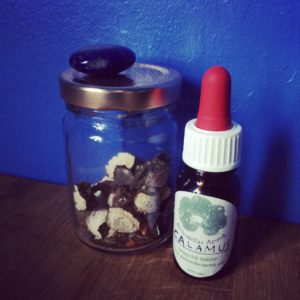
[:en]The power to speak
![]()
Calamus root is aromatic and bitter. It is used for throat colds, sore throats, irritable coughs, laryngitis, chest colds, and head colds. It is considered an effective antihistamine; clearing stuffy sinuses and helping to dispel mucous. It is good when you've lost your voice and for singers or people who work with the voice.
It is also good for libido in both sexes. It also has a reputation in Ayurveda for benefitting conditions in the aging prostate. According to herbalist Henriette Kress “Calamus is astonishing for the pain from endometriosis. One of the few herbs we have for that; cherish it…”
![]()
Calamus also excels as a relaxant, despite its stimulating properties. “Stimulant” and “relaxant” shouldn't be seen a contradictory (uses occupying opposite ends of a polarity): stimulating herbs increase the expression of the vital force, while relaxants ease the resistance to that expression. They work together in a complimentary fashion to achieve the same end: better flow of energy and vitality.
Calamus can be incredibly effective in treating anxiety and is especially helpful in finding one’s voice and expression.
![]()
Calamus promotes circulation to the brain, sharpens memory, enhances awareness, and increases communication. The yogic name, Vacha, means “speech” and refers to its action on the fifth chakra and its propensity to help you speak from your highest consciousness.
Clarity, centering, perspective. Expressing one's truth. This is what the teachings of Calamus is about.[:sv]ABRAKADABRA – jag skapar det jag uttrycker
Ordens magi
![]()
Kalmusroten är aromatisk och bitter. Den används vid halsont, halsfluss, irriterande hosta, förkylning och huvudvärk som liksom känns tjock och svullen. Den används som en effektiv antihistamin, den städar täppta bihålor och för ut slemmet. Kalmus är bra om man tappat rösten och för de som sjunger eller använder rösten på annat vis.
Den är också libidohöjande för båda könen. Inom ayurveda anses kalmusroten förebygga prostatabesvär. Henriette Kress skriver att kalamus är överlägsen vid smärtor av endometrios.
![]()
Kalmusroten är överlägsen både som en avslappnande och stimulerande ört. “Stimulerande” och “avslappnande” bör inte ses som en paradox, det är bara ytterligheterna av en polaritet. Stimulerande örter ökar den vitala kraftens uttryck medan avslappnande örter sänker motståndet av samma kraft. Polariteterna samverkar för samma resultat: Ett bättre flöde av livsenergi och vitalitet. Kalmusroten är otroligt ångestdämpande.
Särskillt värdefull är kalmusroten i att stödja ens uttryck och i att hitta sin egen röst.
![]()
Kalmusroten främjar cirkulationen till hjärnan, är bra för minnet, stärker medvetandet och stödjer förmågan att kommunicera. Det yogiska ordet, Vacha, betyder “tal” och anspelar på femte chakrat och förmågan att tala från ens högsta medvetande.
Klarhet, centrering, perspektiv. Att uttrycka ens sanning. Det är det kalmusrotens medicin handlar om.[:]
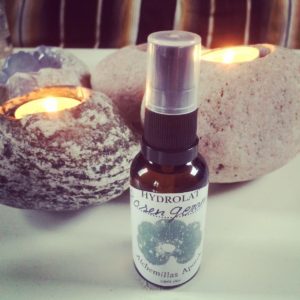
[:en]
Geranium hydrosol will draw moisture to the skin acting as a wonderful hydrator. It makes a beautiful perfume or body spray. Extremely uplifting and balancing for the emotional body.
[:sv]
[:]
